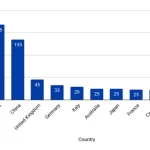
Neanderthals and Humans Coexisted 45,000 Years Ago: Genetic Revelations Rewrite History
February 1, 2024In a groundbreaking archaeological discovery, researchers have uncovered evidence that Neanderthals and modern humans not only lived side by side but also overlapped in Northern Europe approximately 45,000 years ago. The findings, published in Nature and Nature Ecology and Evolution, challenge previous assumptions and shed light on the intricate relationship between these two human species.
The revelation comes from a new excavation at the Ilsenhöhle site near Ranis, Germany, known for its finely flaked stone tool blades. The 45,000-year-old bone fragments unearthed at the site were subjected to mitochondrial DNA analysis, definitively proving their Homo sapiens origin. This discovery establishes Ilsenhöhle as one of the oldest confirmed sites of modern human Stone Age culture in north central and northwestern Europe.
The genetic analysis, along with isotopic and radiocarbon dating, showcases that Homo sapiens and Homo neanderthalensis coexisted for several thousand years. The cohabitation aligns with genomic evidence suggesting occasional interbreeding between the two species. Moreover, it sparks theories that the influx of modern humans into Europe around 50,000 years ago might have contributed to the eventual extinction of Neanderthals, who had occupied the region for over 500,000 years.
Lead researcher Elena Zavala, a Miller Research Fellow at the University of California, Berkeley, highlighted the significance, stating, “Homo sapiens made this technology, and Homo sapiens were this far north at this time period, which is 45,000 years ago.” These findings challenge previous knowledge, pushing back the timeline for Homo sapiens’ presence in northwestern Europe.
The stone blades, referred to as leaf points, found at Ilsenhöhle are attributed to the Lincombian-Ranisian-Jerzmanowician (LRJ) culture. Previous dating of the site indicated an age of 40,000 years or older, but without identifiable bones, it remained uncertain whether Neanderthals or Homo sapiens were responsible for the stone tools.
Zavala’s genetic analysis of hominid bone fragments confirmed Homo sapiens origin. The analysis constructed a family tree of early Homo sapiens in Europe, revealing a surprising connection between the Ranis mitochondrial DNA sequences and a 43,000-year-old skull discovered in the Czech Republic. The findings suggest a possible single population, raising intriguing questions about the relationship between different groups.
The Ilsenhöhle site not only serves as a pivotal archaeological location but also offers insights into the environmental conditions and diets of early humans. The presence of reindeer, cave bear, woolly rhinoceros, and horse bones indicates cold climatic conditions akin to Siberia and northern Scandinavia, challenging previous assumptions about early humans’ resilience to harsh climates.
This transformative discovery redefines our understanding of the interaction between Neanderthals and Homo sapiens, painting a vivid picture of coexistence and adaptation in ancient Northern Europe. As scientists continue to unravel the mysteries of our shared human history, the Ilsenhöhle excavation stands as a testament to the fascinating and dynamic relationship between different human species.
In a groundbreaking revelation, Homo sapiens’ presence in Northern Europe has been pushed back by approximately 47,500 years, as confirmed by DNA analysis and radiocarbon dating of bone fragments unearthed at the Ilsenhöhle site near Ranis, Germany. The findings, detailed in Nature and Nature Ecology and Evolution, challenge established notions about the region’s settlement history, painting a more intricate picture of sporadic human occupation.
Elena Zavala’s meticulous DNA analysis left no room for doubt, confirming that all 13 bone fragments discovered at Ilsenhöhle belonged to Homo sapiens. This discovery, coupled with radiocarbon dating, reshapes our understanding of Europe north of the Alps and sheds light on the chronological sequence of human presence in the cave.
The radiocarbon dating focused on human and animal bones from different layers of the site, specifically targeting bones exhibiting traces of human modifications. Helen Fewlass, another first author of the study, highlighted the significance of the findings, stating, “The evidence suggests that Homo sapiens were sporadically occupying the site from as early as 47,500 years ago.” This challenges previous timelines and offers a revised settlement history for Northern Europe.
Tim Schüler of the Thuringian State Office for the Preservation of Historical Monuments and Archaeology in Weimar, Germany, emphasized the transformative impact of the Ilsenhöhle discoveries on our understanding of Europe’s past. The strong correlation between radiocarbon dates from Homo sapiens bones and modified animal bones from the LRJ (Lincombian-Ranisian-Jerzmanowician) layers of the new excavation establishes a robust link between human presence and the LRJ culture.
The excavations, led by researchers such as Marcel Weiss of the Friedrich-Alexander-Universität Erlangen-Nürnberg and Shannon McPherron of MPI-EVA, have received financial support from the Max Planck Society. The comprehensive analysis not only contributes to our knowledge of early Homo sapiens but also underscores the significance of Ilsenhöhle as a pivotal archaeological site.
This groundbreaking research, uncovering a richer settlement history and pushing back the timeline of Homo sapiens in Northern Europe, adds a new layer of complexity to our understanding of human evolution in the region. As scientists continue to delve into the mysteries of our past, the Ilsenhöhle excavation stands as a testament to the continuous evolution of our understanding of human history.
Journal Reference:
Dorothea Mylopotamitaki, Marcel Weiss, Helen Fewlass, Elena Irene Zavala, Hélène Rougier, Arev Pelin Sümer, Mateja Hajdinjak, Geoff M. Smith, Karen Ruebens, Virginie Sinet-Mathiot, Sarah Pederzani, Elena Essel, Florian S. Harking, Huan Xia, Jakob Hansen, André Kirchner, Tobias Lauer, Mareike Stahlschmidt, Michael Hein, Sahra Talamo, Lukas Wacker, Harald Meller, Holger Dietl, Jörg Orschiedt, Jesper V. Olsen, Hugo Zeberg, Kay Prüfer, Johannes Krause, Matthias Meyer, Frido Welker, Shannon P. McPherron, Tim Schüler, Jean-Jacques Hublin. Homo sapiens reached the higher latitudes of Europe by 45,000 years ago. Nature, 2024; DOI: 10.1038/s41586-023-06923-7


















